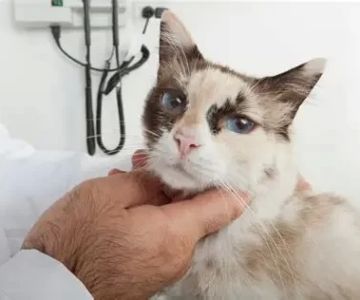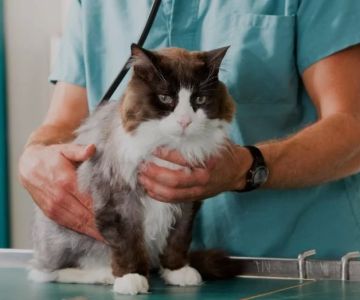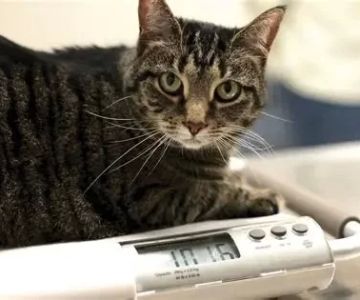- 1-Understanding-Feline-Urinary-Incontinence
- 2-Common-Signs-and-Symptoms
- 3-Causes-of-Feline-Urinary-Incontinence
- 4-Diagnosing-the-Condition
- 5-Treatment-Options-and-Home-Care
- 6-Real-Life-Cases-and-What-Pet-Owners-Can-Learn
- 7-Preventing-Future-Urinary-Issues
- 8-Why-Hidden-Brook-Veterinary-Is-Your-Trusted-Partner
1. Understanding Feline Urinary Incontinence
When discussing how to recognize and treat pet feline urinary incontinence, it’s important first to understand what this condition actually means. Urinary incontinence occurs when a cat loses control over its bladder, leading to accidental leaks or urination outside the litter box. Unlike behavioral issues, this is a medical condition that typically stems from an underlying health problem.
Feline urinary incontinence can affect cats of all ages, but it’s more common in older or spayed females. The issue can range from mild leaking to complete loss of bladder control, and if left untreated, it can cause discomfort, skin irritation, and infections.
2. Common Signs and Symptoms
2.1 Frequent urination or small leaks
One of the first signs of urinary incontinence is noticing small puddles of urine where your cat sleeps or rests. You may also find damp spots on bedding or furniture, even if your cat is well-trained.
2.2 Strong odor and hygiene changes
Cats are naturally clean animals. If your feline starts to smell like urine or stops grooming itself properly, it’s a strong indication that something is wrong. Persistent odor around your cat’s rear or tail area can suggest bladder leakage.
2.3 Behavioral changes
A cat suffering from urinary discomfort may become anxious, hide more often, or meow excessively when trying to urinate. These signs can be subtle, but they reflect underlying pain or distress.
3. Causes of Feline Urinary Incontinence
3.1 Urinary tract infections (UTIs)
UTIs are one of the most common causes of incontinence in cats. Bacterial infections irritate the bladder lining, causing inflammation that leads to frequent urination or leakage. Prompt antibiotic treatment can usually resolve the issue.
3.2 Neurological disorders
Spinal injuries, nerve damage, or degenerative conditions can interfere with bladder control. These cases require thorough veterinary evaluation, as they often need long-term management or specialized treatment plans.
3.3 Bladder stones or blockages
Crystals or stones in the urinary tract can obstruct the bladder, preventing proper urination and leading to overflow incontinence. This is a medical emergency that demands immediate veterinary attention to prevent life-threatening complications.
3.4 Hormonal imbalances
In some cats, especially those that are spayed or aging, decreased estrogen levels can weaken bladder muscles, leading to leaks. Hormone therapy or muscle-strengthening medications may be effective in these cases.
4. Diagnosing the Condition
4.1 Veterinary examination
Your veterinarian will start with a full physical exam to rule out other causes of inappropriate urination. They’ll ask about your cat’s medical history, litter box habits, and any recent behavioral changes.
4.2 Laboratory tests and imaging
Urinalysis, blood tests, and imaging such as X-rays or ultrasounds help identify infections, kidney problems, or bladder abnormalities. These tests are essential for determining the root cause of the incontinence.
4.3 Differentiating between medical and behavioral causes
Sometimes, urinary accidents stem from stress, anxiety, or changes in the household environment. By combining behavioral assessment with diagnostic testing, your vet can pinpoint whether the issue is medical, behavioral, or a mix of both.
5. Treatment Options and Home Care
5.1 Medical treatment
The treatment for feline urinary incontinence depends on its cause. Infections are typically treated with antibiotics, while stones may require surgery or dietary management. For hormone-related cases, medications can help restore bladder strength and control.
5.2 Home environment adjustments
Provide easy access to litter boxes, especially for older cats or those with mobility issues. Place multiple boxes throughout your home and keep them clean to encourage use. Soft bedding and absorbent pads can also help manage occasional leaks comfortably.
5.3 Nutritional and lifestyle support
Hydration is key to urinary health. Encourage your cat to drink more water by offering a water fountain or wet food. Specialized urinary health diets can also reduce crystal formation and maintain bladder balance. Stress management, including consistent routines and safe spaces, supports recovery and reduces flare-ups.
6. Real-Life Cases and What Pet Owners Can Learn
At Hidden Brook Veterinary, one memorable case involved an 8-year-old Siamese cat named Willow. Her owner noticed she was leaving wet spots on the couch despite always using her litter box. Tests revealed a mild bladder infection and early signs of hormone-related muscle weakness. With antibiotics, hormone therapy, and simple environmental changes, Willow regained control within weeks.
Another cat, a senior Maine Coon named Oliver, suffered from recurring bladder stones. After surgery and a strict urinary diet, his condition stabilized. His story reminds pet owners that consistent veterinary care and diet management can prevent relapse and ensure long-term well-being.
7. Preventing Future Urinary Issues
7.1 Regular veterinary checkups
Routine checkups and urinalysis tests help detect early signs of urinary issues before they become severe. Older cats should have biannual wellness visits to monitor kidney and bladder health.
7.2 Encourage hydration and healthy habits
Keeping your cat hydrated is one of the easiest preventive measures. Cats naturally drink less than dogs, so wet food and multiple water stations can make a big difference.
7.3 Stress management
Environmental stress can trigger urinary problems. Maintain a calm, predictable home environment, provide scratching posts and toys, and give your cat plenty of affection and safe spaces to relax.
8. Why Hidden Brook Veterinary Is Your Trusted Partner
At Hidden Brook Veterinary, we specialize in helping cat owners understand and manage complex health issues like urinary incontinence. Our experienced team uses advanced diagnostic tools and personalized care plans to ensure your feline companion receives the best possible treatment.
If you’re wondering how to recognize and treat pet feline urinary incontinence, our veterinarians are here to help. From early diagnosis to tailored recovery strategies, Hidden Brook Veterinary provides the expertise and compassion needed to restore your cat’s comfort and confidence—because every cat deserves a healthy, happy life.











